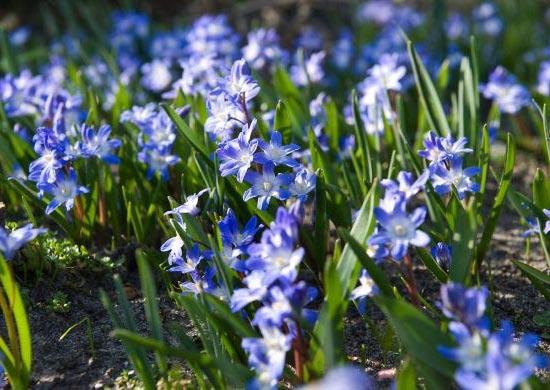
3 minute read
TIPStricks
Protect Pumpkins from Rotting Before Halloween
Before you head out to the patch to pick your perfect pumpkin, Virginia Cooperative Extension horticulture expert Ashley Edwards says it’s important to wait until pumpkins are fully mature before harvesting and to carve them as close to Halloween as you can to avoid early rotting. Edwards offers the following tips: • Prevent rotting by waiting until maturity to harvest; avoid freezing temperatures. • Mature pumpkins have hard, shiny shells that can’t be easily punctured by a fingernail. • Cure your pumpkin (allow skin to harden) by allowing it to remain in the garden during dry, sunny weather; ideally, 80–85 degrees F, for about 7–14 days. • Before carving, store pumpkins in well-ventilated areas to extend their lifespan before they rot, preferably protected from rain. Pumpkins will retain good quality for approximately two to three months if stored at the appropriate relative humidity (50–70 percent) and temperature (50–55°F). Once your pumpkin is carved, Edwards says you can use petroleum jelly on the inside and outside of the pumpkin to keep it hydrated. “Try using battery-operated lights instead of real candles to prevent wilting, and you can also spray the outside of the pumpkin with clear acrylic spray to help keep pests and bacteria away.” To dispose of your pumpkin, Edwards says to add it to the compost pile as a good use of the leftover organic matter for future gardening. For additional tips about how to keep a homegrown pumpkin diseasefree and healthy, visit the Disease Management Tool in the Home Grounds and Animals Pest Management Guide from Virginia Cooperative Extension at https://ext.vt.edu. o
Plant a Colorful Blanket with Glory-of-the-Snow
Compared with tulips and daffodils, Glory-of-the-Snow (Chionodoxa sp.) is a relatively unknown bulbous plant. As the saying goes: unknown, unloved; so it’s time to put this small but powerful flower in the spotlight. Glory-of-the-Snow grows in the wild in the Turkish mountains, where the colorful flowers form beautiful blankets in the snow. The botanical name Chionodoxa refers to this as well: The Greek word “chiōn” means snow, and “doxa” (δόξα) means fame or glory. This bulbous plant deserves a place in the spotlight because it is a strong and rewarding bloomer.
Glory-of-the-Snow will start to bloom from February onward, regardless of freezing temperatures or snow. Its growth and flowering power is unstoppable, despite the cold. The small flowers consist of six petals, which are fused together. The color is usually blue, but sometimes also pink or white. They appear in great numbers, forming colorful carpets in the garden. Glory-of-the-Snow will naturalize; how convenient is that? This does not happen via the bulbs, but through the seeds of the dead flowers. The seeds have an elaiosome attached to them (an appendage to the seed). Ants love these appendages and will take them to the place where they eat the sweet treat. The seed itself is bitter, so they leave it. New Glory-of-the-Snow will sprout from this seed the following year. The blue color of Glory-of-the-Snow contrasts well with yellow and white daffodils and small, early-flowering red tulips. White and pink Glory-of-the-Snow goes well with yellow daffodils and lapwing flowers (Fritillaria sp.). A spot next to deciduous plants or shrubs is perfect. It can also be planted in the lawn, just like crocuses and snowdrops. Good to know about Glory-of-the-Snow: • If you want to have a colored blanket in your garden, apply the power of quantity. Plant at least 50 bulbs for each square yard/meter. • Glory-of-the-Snow will grow almost anywhere and does not ask for much: good drainage, an open position in the sun or partial shade, and a little frost. • The bulbs need the cold of winter to be able to grow, but they are strong enough to withstand a dry spring and a hot summer with no trouble at all. • Glory-of-the-Snow can withstand salty winds and therefore also thrives in a coastal location. • Many flowers often close up when there is no sunlight, but the star-shaped flowers of Glory-of-the-Snow stay open, even in the absence of sunlight. More information about flower bulbs is available at www.flowerbulbs.com. o









